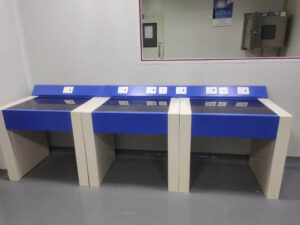
Balance is an important instrument for any laboratory. And when it comes to the results in a laboratory, accuracy is something that matters the most. Balances and scales that labs utilize today come in multiple shapes and sizes.
Accuracy is always defined as the value closest to the standard measurements, and the benefits of laboratory balance lie in its ability to achieve this accuracy and precision.
Therefore, this article discusses balancing and its types used in a laboratory.
What is Laboratory Balance?
The laboratory balances are used to precisely measure the weight of an object, leaving very little room for inaccuracy. The mass of the object is estimated using metric units like Gram (g), Kilogram (KG), pounds (lbs), or Ounces (oz).
Though these balances provide high readability, an expansive weighing range, accuracy, and precision, factors such as laboratory environment, operating temperature, moisture, vibration, and ventilation current can influence the result.
Therefore, the weighing pan shall be enclosed or sealed to avoid contact with dust or contaminants. Samples should be preserved at room temperature to prevent the development of air currents inside the enclosed area.
How Many Types of Laboratory Balances are there?
1. Analytical balance
An analytical balance is a highly precise and accurate laboratory balance designed to measure the mass of an object. The objects could be anything from solids to liquids to granular substances or powders.
Its self-calibration system allows for weight adjustment and ensures that the scale is always correctly set and produces the most precise results. It can measure the weight of an object of 100g to within ± 0.01 mg. These are mainly found in laboratories where extreme sensitivity is needed for weighing items.
Two types of analytical balances include:
- Microbalance: A Laboratory microbalance can accurately measure the weight of microscopic objects, with a resolution in the order of a millionth of a gram.
- Semi Micro: It is a type of analytical balance with a readability of 0.01 milligrams and is commonly used in high-requirement laboratories. These are normally paired with an anti-vibration table.
2. Precision balance
A precision balance is a reliable weighing instrument with capacities ranging from 120 g to 64 kg and readabilities ranging from 1 g to 0.1 mg. Lower readability models include a draught shield for optimal performance, while high-capacity models include a large weighing pan to accommodate heavy loads.
Precision balances are used in various lab and manufacturing applications, such as sample and standard preparation, formulation, statistical quality control, and counting.
3. Compact Balance
Compact means being packed together closely. Regarding weighing and balancing, it refers to a small digital weighing balance perfect for utilization in areas with limited space. Compact balances were created to meet the fundamental needs of educational and research laboratories that require weight measurements in increments of 0.01g to 0.1g.
4. Triple-beam balance
A triple beam balance determines the mass of an object weighing less than 610 grams. The triple beam balance measures mass by placing an object on the pan on the balance\’s left side.
The counterweights are located on the balance\’s right side. When the pointer at the end of the beam is lined up against -0, the mass of counterweights and object will balance.
5. Spring Balance
This type of weighing device, which is no longer widely used, relied on the displacement of a precision spring. The displacement increases with the load on the spring. Today, they are rarely used in laboratory environments due to their incompetency against the accuracy and sensitivity of a modern laboratory balance.
Applications
A wide range of industry sectors relies on the accuracy of laboratory balances to deliver accurate results, with chemistry being the most well-known. These balances can be applied in various settings, including clinical, research, and environmental settings.
- Analytical balances are most commonly used in science laboratories, the pharmaceutical industry, and higher educational institutes for the formulation, density determination, purity analysis, and conformance testing.
- Precision balances are used in pharmaceutical, food, chemical, and textile research and quality control labs and academic organizations.
- Compact balances are suitable for performing basic weight measurements in general science, physics, and chemistry labs.
- Triple beam balances are commonly used in educational labs to teach students about mass, weight, and measurement. And also to weigh active ingredients and excipients in pharmaceutical labs.
- Spring balances weigh heavy loads like trucks, storage silos, and material carried on a conveyor belt. They are also used in science labs as primary accelerators.
Use of Anti-Vibration Table



An anti-vibration table plays a vital role in a laboratory environment, reducing disruptive vibrations that may cause inaccuracies and damage costly equipment.
Heavy vibrations in a lab setting can eventually cause dangerous interference for sensitive work. Therefore, anti-vibration tables are the most suitable tool for weighing substances and balancing high-precision equipment.
They reduce the risk of damaging expensive chemical substances using shock-absorbing material, providing unrivaled safety and high-quality work in a lab.
Conclusion
In conclusion, laboratory balances are usually used to measure the weight of an object very accurately. These balances commonly used in labs include analytical, precision, compact, spring, and triple-beam balance.
While a precision balance is a perfect choice for any regular measuring task in the lab, compact balances are a better alternative for clinical laboratories and industrial operations. These balances can be used in clinical, research, and academic or environmental settings.
For any application of these principles as mentioned above, MN Sons lab solutions are certified laboratory furniture manufacturers who produce a range of ergonomic furniture to help in your scientific tasks. We manufacture durable quality anti-vibration tables with suitable customizations with improvised technology.
Frequently Asked Questions
What is digital balance in a laboratory?
A digital balance is used in a laboratory to weigh samples. When you apply a weight to the digital balance, an electronic circuit generates a current, converted into a digital readout on display.
What is calibration balance?
Calibration is a relationship between measurements and is required for accurate weighing results. Balances are calibrated to display the correct size per their country\’s standards.
What is the advantage of digital balance in labs?
Digital balances have significantly reduced or eliminated the possibility of human error, simplified device operation, and reduced weighing times.


